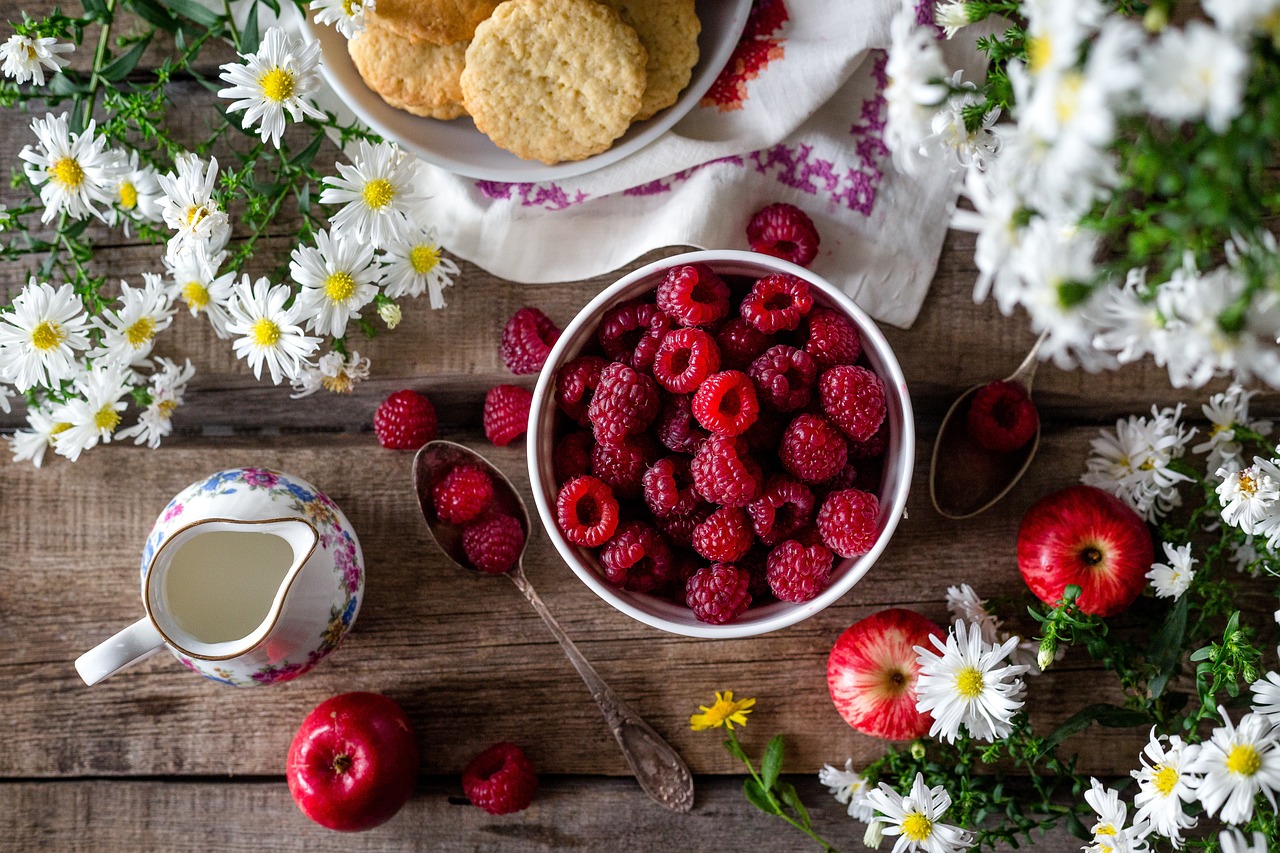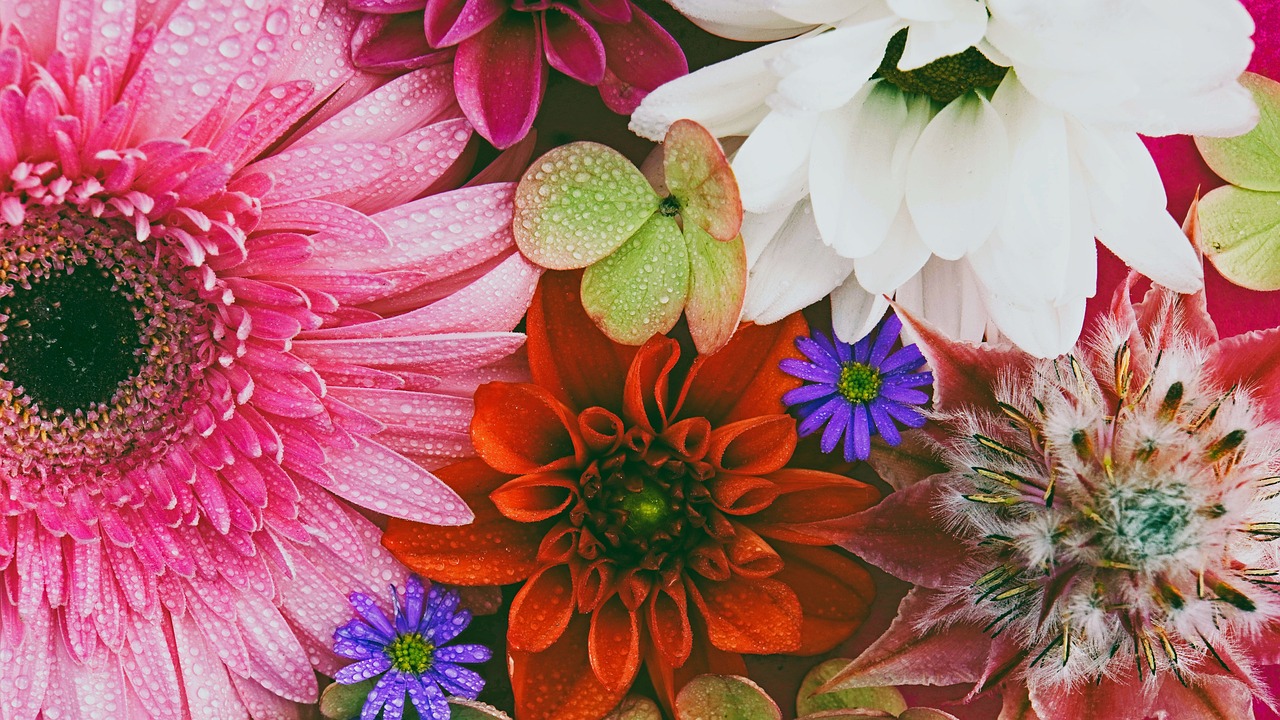How to Pilot Your Paintings: A Guide to Composition
Welcome to the vibrant world of painting, where every stroke of the brush can tell a story, evoke emotions, and captivate the viewer's imagination. If you've ever gazed at a painting and felt an inexplicable connection, you can bet that the artist behind it had a solid grasp of composition. In this guide, we will explore essential techniques and principles of composition that can help you create visually engaging and harmonious artworks. Think of composition as the backbone of your painting; it holds everything together and ensures that your message is communicated effectively. So, are you ready to pilot your paintings to new heights of creativity?
Let's kick things off by diving into the fundamentals of composition. Composition is not just about placing objects on a canvas; it's about creating a visual journey for your audience. Key concepts like balance, focal points, and the rule of thirds are essential in enhancing the overall effectiveness of your artwork. Imagine your painting as a stage, where each element plays a role in the narrative you're trying to convey. Without a solid foundation in these basics, your artwork may end up feeling disjointed or chaotic. So, let’s break down these concepts further to ensure you have a strong grasp of the essentials.
Now that we've laid the groundwork, let's explore the key elements of design that will elevate your compositions. These elements include line, shape, color, and texture. Each of these components acts like a building block, contributing to the overall structure of your painting. For instance, lines can guide the viewer's eye, shapes can create interest, and colors can evoke emotions. When utilized effectively, these elements can create a cohesive and striking composition that draws viewers in and keeps them engaged.
Achieving balance in your artwork is crucial for creating a pleasing composition. Think of balance as a seesaw; if one side is too heavy, it will tip over. In painting, balance can be categorized into two main types: symmetrical and asymmetrical. Symmetrical balance creates a sense of harmony and stability, while asymmetrical balance offers dynamic and interesting compositions. By distributing visual weight effectively across your canvas, you can guide the viewer's experience and enhance the overall impact of your artwork.
Symmetrical balance is like a mirror image, where elements on one side of the canvas are mirrored on the other. This creates a sense of order and tranquility. To achieve this effect, consider the following tips:
- Place your focal point at the center of the canvas.
- Use similar shapes and colors on both sides to create harmony.
- Experiment with reflections or repeating patterns to enhance symmetry.
By carefully arranging elements in this way, you can create a painting that feels grounded and stable.
On the flip side, asymmetrical balance is all about creating visual tension and movement. While it may seem chaotic at first glance, a well-executed asymmetrical composition can be incredibly engaging. Here are some strategies to consider:
- Use contrasting colors or shapes to draw attention to different areas.
- Position heavier elements on one side and lighter ones on the opposite side to maintain balance.
- Incorporate diagonal lines to lead the viewer's eye through the composition.
By embracing asymmetry, you can create a painting that feels alive and dynamic, inviting viewers to explore every corner.
Focal points are essential in guiding the viewer's eye to specific areas of your painting. Think of them as the stars of your show. Establishing and emphasizing focal points can enhance the narrative of your artwork. To create effective focal points, consider using contrasting colors, unique shapes, or even varying textures to make certain elements stand out. Remember, the goal is to draw the viewer's attention and keep them engaged with your story.
Color is a powerful tool in composition that can significantly impact the mood and message of your painting. Understanding the basics of color theory, including complementary colors and color harmony, will improve your painting's visual impact. Colors can evoke emotions, set the tone, and create a sense of unity in your artwork. So, let's explore how to use color effectively in your compositions.
Colors have the power to influence emotions and perceptions. For example, warm colors like red and orange can evoke feelings of passion and energy, while cool colors like blue and green can create a sense of calm and tranquility. When selecting color schemes, consider the message you want to convey. Do you want your painting to feel vibrant and energetic, or serene and peaceful? By choosing colors that resonate with your intended message, you can enhance the emotional depth of your work.
Understanding color relationships is essential for creating harmonious palettes that unify your painting. Utilizing complementary colors can create striking contrasts, while analogous colors can provide a sense of cohesion. Experiment with different color combinations to find what works best for your composition. Remember, the right colors can elevate your artwork from ordinary to extraordinary!
As we wrap up this guide, you might have a few lingering questions. Here are some common queries about composition in painting:
- What is the rule of thirds? The rule of thirds is a guideline that suggests dividing your canvas into a 3x3 grid. Placing your focal points along these lines or at their intersections can create a more balanced composition.
- How do I know if my painting is balanced? Step back and take a look at your painting from a distance. If one side feels heavier or more cluttered than the other, it may need adjustments to achieve balance.
- Can I break the rules of composition? Absolutely! While understanding the rules is crucial, don't be afraid to experiment and break them. Art is about self-expression, and sometimes the most compelling pieces come from bending the rules.

Understanding Composition Basics
Composition is the backbone of any artwork, acting as the invisible thread that ties all elements together. Just like a well-crafted story, a painting needs a solid structure to effectively convey its message. Imagine walking into a gallery where every piece draws you in, not just because of the colors or subjects, but due to how everything is arranged. This is the magic of composition! To create visually engaging and harmonious artworks, it's essential to grasp some fundamental concepts that can elevate your paintings from ordinary to extraordinary.
First and foremost, balance is crucial. Think of balance as the equilibrium of visual weight in your painting. It can be achieved through various techniques, and understanding how to create a sense of stability or dynamism can dramatically affect how viewers perceive your work. There are two primary types of balance to consider: symmetrical and asymmetrical. Symmetrical balance is like a mirror image, where one side of the canvas mirrors the other, creating a sense of calm and order. In contrast, asymmetrical balance is more about distributing visual weight unevenly, which can create excitement and movement.
Next, let’s talk about focal points. These are the areas in your painting that draw the viewer's eye and hold their attention. Think of them as the main characters in a story, each playing a vital role in conveying the narrative. Establishing a clear focal point can guide your audience through the painting, allowing them to experience the intended journey. Techniques such as contrast, color, and placement can help you create and emphasize these focal points effectively.
Another essential concept is the rule of thirds. Imagine dividing your canvas into a grid of nine equal sections. The intersections of these lines are prime spots for placing your focal points. This technique helps create a more engaging composition rather than simply centering everything. By positioning key elements along these lines or at their intersections, you can lead the viewer's eye through the artwork in a more natural and compelling way.
In summary, mastering the basics of composition involves understanding balance, creating focal points, and applying the rule of thirds. By integrating these principles into your painting practice, you can significantly enhance the effectiveness of your artwork, making it not just visually appealing but also emotionally resonant. Remember, the goal of composition is not just to arrange elements but to weave a story that captivates and communicates with your audience.

Elements of Design
When diving into the world of painting, understanding the is like having the keys to a treasure chest. Each element plays a crucial role in crafting a composition that not only looks good but also resonates with the viewer. Let's break down these fundamental components: line, shape, color, and texture. Each of these elements is a building block that contributes to the overall harmony and effectiveness of your artwork.
The line is perhaps the most basic yet powerful element. It can guide the viewer's eye, create movement, and establish boundaries. Think of lines as the roads on a map; they lead you to various destinations within your painting. Whether they are straight, curved, thick, or thin, lines can evoke different feelings and direct attention. For instance, a jagged line might create tension, while a smooth, flowing line can convey tranquility.
Next, we have shape, which refers to the two-dimensional areas created by lines. Shapes can be geometric, like squares and circles, or organic, resembling natural forms. They help in defining spaces and can create contrast, making your artwork more engaging. Imagine shapes as the building blocks of your painting, each one contributing to the overall structure and narrative.
Now, let’s talk about color. This element is not just about aesthetics; it carries emotional weight and can significantly impact the mood of your painting. Different colors can evoke various feelings. For example, warm colors like reds and yellows can create a sense of excitement or warmth, while cool colors like blues and greens often evoke calmness or sadness. Understanding color theory is essential for any artist, as it allows you to create palettes that resonate with your audience.
Lastly, we have texture, which adds depth and dimension to your artwork. Texture can be actual (the way the paint feels on the canvas) or implied (the visual representation of texture). Incorporating texture can make your painting more tactile and engaging. For instance, a rough texture might suggest a rugged landscape, while a smooth texture could imply a serene sky. By playing with texture, you can enhance the sensory experience of your artwork.
To sum it up, mastering these elements of design is crucial for any artist looking to elevate their work. Here’s a quick overview of how these elements interact:
| Element | Function | Emotional Impact |
|---|---|---|
| Line | Guides the viewer’s eye | Creates movement and emotion |
| Shape | Defines areas and spaces | Establishes contrast and structure |
| Color | Sets mood and tone | Evokes emotions |
| Texture | Adds depth and dimension | Enhances sensory experience |
By understanding and effectively using these elements, you can create compositions that are not only visually appealing but also rich in meaning. Remember, each element works best when harmonized with the others, creating a cohesive and striking piece that captures your audience's attention and imagination.
- What is the most important element of design in painting? While all elements are important, color often plays a crucial role in setting the mood and tone of a painting.
- How can I improve my understanding of composition? Practice regularly, study other artists’ works, and experiment with different combinations of the elements of design.
- Is it necessary to follow the rules of composition strictly? Not at all! While understanding the rules can help, creativity often flourishes when you bend or break them.

Balancing Elements
When it comes to painting, achieving balance is akin to walking a tightrope; it requires skill, awareness, and a little bit of intuition. Balancing elements in your artwork is not just about making sure everything looks pretty; it’s about creating a sense of harmony that guides the viewer’s eye and evokes emotion. Think of balance as the backbone of your composition—it holds everything together and ensures that no single part of your painting overpowers the others. Imagine a seesaw; if one side is too heavy, it tips and becomes unstable. Similarly, in art, if one element is too dominant, it can disrupt the viewer's experience.
There are two primary types of balance to consider: symmetrical and asymmetrical. Symmetrical balance is like a mirror image; it creates a sense of order and calmness. On the other hand, asymmetrical balance is more dynamic and can create a sense of movement and excitement. Both techniques have their place in painting, and understanding how to use them effectively can elevate your work to new heights.
To better illustrate the differences between these two types of balance, let’s take a closer look:
| Type of Balance | Description | Effect on Composition |
|---|---|---|
| Symmetrical Balance | Elements are arranged evenly on either side of a central axis. | Creates a sense of stability and formality. |
| Asymmetrical Balance | Elements are arranged unevenly, but still achieve balance through visual weight. | Creates a sense of movement and interest. |
When you’re working on your painting, consider the visual weight of each element. Visual weight can be influenced by factors such as size, color, and texture. For example, a large, dark object will carry more visual weight than a small, light one. By thoughtfully arranging your elements, you can create a balanced composition that feels complete and engaging.
As you practice balancing elements in your artwork, remember that it’s not always about achieving perfect symmetry or balance; sometimes, a little imbalance can lead to a more captivating piece. Experiment with different arrangements and trust your instincts. After all, art is as much about the journey as it is about the destination.
- What is the importance of balance in painting? Balance helps create a harmonious composition that guides the viewer’s eye and enhances the emotional impact of the artwork.
- Can I use both symmetrical and asymmetrical balance in the same painting? Absolutely! Combining both types of balance can add complexity and interest to your artwork.
- How do I determine the visual weight of an element? Consider factors like size, color, and texture. Darker and larger elements tend to have more visual weight.

Symmetrical Balance Techniques
When it comes to achieving symmetrical balance in your paintings, think of it as creating a perfect mirror image across your canvas. This technique not only brings a sense of harmony and stability to your artwork but also invites the viewer to engage with it on a deeper level. Imagine standing in front of a beautiful, serene landscape where every element feels just right, almost like nature's own way of balancing itself. That’s the magic of symmetrical balance!
To master this technique, start by visualizing your canvas as a divided space. You can imagine a vertical line running down the center, splitting your work into two equal halves. Here are some practical tips to help you achieve this:
- Identify Key Elements: Determine which elements in your painting will serve as focal points. These could be trees, buildings, or even abstract shapes. Position them evenly on either side of your imaginary line.
- Use Color and Texture: Balance isn’t just about shapes; color and texture play a significant role as well. If one side of your painting has a bright color or a rough texture, consider mirroring that on the other side to maintain visual equilibrium.
- Scale and Proportion: Ensure that the size of elements on both sides is proportional. For instance, if you have a large tree on one side, balance it with a similar-sized element on the other side, even if it’s a different object.
Additionally, you can create a visual pathway that leads the viewer's eye across the canvas. This can be achieved by using lines or shapes that guide the gaze from one side to the other, enhancing the sense of balance. Think of it like a well-choreographed dance where every movement complements the other, creating a seamless flow.
Another effective method is to use negative space strategically. Leaving equal amounts of empty space on both sides of your painting can accentuate the balanced elements, making them pop even more. This technique is especially useful in minimalist art, where simplicity speaks volumes.
In summary, achieving symmetrical balance is all about thoughtful arrangement and consideration of elements within your painting. By applying these techniques, you’ll not only create a visually pleasing artwork but also evoke a sense of calm and order that resonates with your audience. Remember, art is a conversation, and symmetrical balance is a way to ensure that your voice is heard loud and clear.
Q: What is symmetrical balance in art?
A: Symmetrical balance refers to a composition where elements are arranged evenly on either side of a central axis, creating a mirror-like effect. This technique often conveys stability and harmony.
Q: Can I use asymmetrical elements in a symmetrical composition?
A: Yes, you can incorporate asymmetrical elements as long as they maintain the overall balance. For example, using larger shapes on one side can be balanced by multiple smaller shapes on the other side.
Q: How do I know if my painting has symmetrical balance?
A: Step back and visually divide your painting into two halves. If the elements feel evenly distributed and create a sense of harmony, then you have achieved symmetrical balance.
Q: Is symmetrical balance always the best option for a painting?
A: Not necessarily! While symmetrical balance is effective for creating calm and order, it may not suit every subject or message. Experiment with both symmetrical and asymmetrical techniques to find what works best for your artistic vision.

Asymmetrical Balance Strategies
Asymmetrical balance is like a thrilling dance on the canvas, where visual elements interact in unexpected ways, creating a sense of movement and energy. Unlike symmetrical balance, which mirrors elements on either side of a central axis, asymmetrical balance relies on the careful distribution of visual weight. Imagine a seesaw: if one side is heavier, it will tilt, but with careful placement, you can achieve a delightful equilibrium that keeps the viewer's eye engaged.
To master asymmetrical balance, start by understanding how different elements can carry varying weights. For instance, a large, dark shape can be balanced by a smaller, lighter shape placed further away. This creates a dynamic tension that invites the viewer to explore the entirety of your painting. Think of it as a conversation between shapes: the larger one might be speaking loudly, while the smaller one whispers softly, yet both are essential to the dialogue.
Here are some strategies to effectively achieve asymmetrical balance in your artwork:
- Contrast in Size: Use larger objects to balance smaller ones by placing them strategically. For example, a big tree on one side can be balanced by a cluster of smaller bushes on the other.
- Color Weight: Bright and bold colors draw the eye more than muted tones. A vibrant red flower can balance a dark, shadowy area of the painting. This interplay of colors can create a captivating visual experience.
- Texture Variation: Different textures can also influence balance. A rough, textured area can be countered by a smooth, sleek surface elsewhere in the composition, providing a tactile contrast that intrigues the viewer.
Additionally, consider the visual pathways that lead the viewer's gaze through your painting. Asymmetrical balance often encourages movement, guiding the eye from one element to another. This can be achieved by arranging elements in a way that leads naturally from one focal point to another, creating a flow that feels both intentional and organic.
Another effective technique is to use negative space to your advantage. Negative space—the area around and between the subjects of your artwork—can help to create balance without adding extra elements. For example, a large object on one side can be balanced by an open area of negative space on the other, allowing the viewer's eye to rest while still maintaining interest.
Ultimately, the beauty of asymmetrical balance lies in its ability to evoke emotion and provoke thought. It invites the viewer to linger longer, to explore the relationships between the elements, and to engage with the narrative you’ve woven into your artwork. By experimenting with these strategies, you can create compositions that are not only visually appealing but also rich in meaning and depth.
Q: What is asymmetrical balance in painting?
A: Asymmetrical balance refers to a composition where visual elements are arranged in a way that is not identical on both sides of a central axis, yet still achieves a sense of equilibrium through careful distribution of visual weight.
Q: How can I achieve asymmetrical balance in my artwork?
A: You can achieve asymmetrical balance by using contrasting sizes, colors, and textures, as well as by strategically placing elements and utilizing negative space to create visual interest and harmony.
Q: Why is asymmetrical balance important in art?
A: Asymmetrical balance adds dynamism and intrigue to your artwork, encouraging viewers to engage more deeply with the piece. It allows for more creativity and expression compared to traditional symmetrical compositions.

Creating Focal Points
When it comes to painting, is akin to setting the stage for a captivating performance. Just like a spotlight highlights the lead actor in a play, your focal points draw the viewer's eye to the most important elements of your artwork. These focal points can tell a story, evoke emotions, and guide the viewer's journey through your canvas. But how do you effectively establish these points of interest in your paintings? Let's dive into some techniques that can help you create stunning focal points that resonate with your audience.
One of the most effective ways to create a focal point is through contrast. By using contrasting colors, shapes, or sizes, you can make an element stand out. For instance, if the majority of your painting consists of muted tones, introducing a bright red or vibrant yellow can instantly grab attention. Think of it like adding a splash of hot sauce to a bland dish—it elevates the entire experience! Additionally, consider the placement of your focal point. The rule of thirds is a powerful tool here. Imagine dividing your canvas into a 3x3 grid; placing your focal point at one of the intersections can create a more dynamic and engaging composition.
Another technique is to use leading lines. These are lines within your painting that guide the viewer’s eye towards the focal point. They can be literal, like a road or a river, or abstract, like the arrangement of elements in your piece. For example, if you're painting a landscape, the path leading to a distant mountain can serve as a natural guide, drawing the viewer's gaze right where you want it. This method not only emphasizes your focal point but also adds depth and perspective to your work.
In addition to contrast and leading lines, scale and size play a significant role in establishing focal points. A larger element in a painting naturally attracts more attention than smaller ones. If you want a particular subject, like a tree or a building, to be the center of interest, consider making it larger than other elements in your composition. This technique can create a sense of importance and hierarchy within your artwork, allowing the viewer to understand what to focus on immediately.
Moreover, texture can also enhance your focal points. By using different techniques—like thick brush strokes, impasto, or even mixed media—you can create a tactile quality that invites viewers to explore your painting further. Imagine a soft, smooth background with a rough, textured focal point; this contrast not only catches the eye but also engages the sense of touch, even if the viewer can’t physically interact with the artwork.
Lastly, to ensure that your focal points are effective, it’s essential to maintain a balance in your composition. Too many focal points can overwhelm the viewer, much like a crowded stage where no actor can shine. Aim for a single, strong focal point or a few that complement each other without competing for attention. This balance creates harmony and allows your narrative to unfold naturally.
In summary, creating focal points in your paintings is about strategically guiding the viewer's eye and enhancing the storytelling aspect of your artwork. By utilizing contrast, placement, leading lines, scale, texture, and maintaining balance, you can craft compositions that not only capture attention but also resonate deeply with your audience. Now, let’s turn our attention to some frequently asked questions that can further clarify the importance of focal points in painting.
- What is the purpose of a focal point in painting? A focal point directs the viewer's attention to the most important part of the artwork, helping to convey the intended message or emotion.
- Can I have more than one focal point? Yes, but it's essential to ensure they complement each other and do not create confusion. Too many focal points can overwhelm the viewer.
- How can I enhance my focal points further? You can enhance focal points by using techniques like contrast, texture, and leading lines, as well as considering the overall balance of your composition.

Color Theory in Composition
Color is not just a visual element; it’s a powerful tool that can transform your painting from a simple image to an emotional experience. Understanding color theory is essential for artists who want to create compositions that resonate with viewers. At its core, color theory involves the relationships between colors and how they can be used harmoniously in your artwork. Imagine walking into a room filled with vibrant colors that instantly lift your mood—this is the kind of impact you can achieve through thoughtful color choices in your paintings.
One of the fundamental concepts in color theory is the idea of complementary colors. These are colors that sit opposite each other on the color wheel, such as blue and orange or red and green. When placed next to each other, complementary colors create a striking contrast that can draw attention and create visual interest. For instance, if you want to make a subject stand out in your painting, consider using a complementary background color. This not only enhances the focal point but also adds depth to the overall composition.
Another important aspect of color theory is color harmony. This refers to the pleasing arrangement of colors that work well together. Think of it like a musical chord; just as certain notes sound good together, certain colors can create a visually appealing effect. To achieve color harmony, artists often use color schemes such as analogous colors—colors that are next to each other on the color wheel, like blue, blue-green, and green. These colors blend seamlessly and can create a sense of unity in your painting.
| Color Scheme | Description | Example |
|---|---|---|
| Complementary | Colors opposite each other on the color wheel | Red & Green |
| Analogous | Colors next to each other on the color wheel | Blue, Blue-Green, Green |
| Triadic | Three colors evenly spaced on the color wheel | Red, Yellow, Blue |
Ultimately, the way you use color can evoke different emotions and perceptions. For example, warm colors like red, orange, and yellow can create feelings of warmth, excitement, and energy, while cool colors like blue, green, and purple can evoke calmness and tranquility. Think about the message you want to convey in your painting—do you want to inspire joy, sadness, or contemplation? Selecting the right color scheme is crucial for enhancing the emotional depth of your work.
When you choose colors for your painting, consider how they might influence the viewer's feelings. For instance, a painting dominated by cool blues and greens might evoke a sense of peace and serenity, while a canvas filled with fiery reds and oranges may stir feelings of passion or urgency. This emotional connection is what makes art so powerful. By consciously selecting your color palette, you can guide the viewer's emotional journey through your work.
Understanding how different colors interact is essential for creating a cohesive composition. One effective way to ensure harmony is to limit your palette. Using only a few colors can help to unify your painting and create a more impactful visual experience. Additionally, consider how colors can create a sense of movement within your composition. For example, a gradient that transitions from light to dark can lead the viewer's eye across the canvas, enhancing the storytelling aspect of your work.
- What is color theory? Color theory is a set of principles that explain how colors interact, how they can be combined, and their effects on the viewer's emotions.
- How can I choose a color scheme for my painting? Consider the mood you want to convey, and experiment with different combinations of complementary, analogous, or triadic colors to find what resonates with your vision.
- Can color affect the perception of my artwork? Absolutely! Colors can evoke specific emotions and influence how viewers interpret your message, making them a vital component of your composition.

Using Color to Evoke Emotion
Color is more than just a visual element; it's a powerful tool that can stir feelings, evoke memories, and even influence perceptions. Imagine walking into a room painted in soft pastels versus one drenched in bold, vibrant hues. The serene pastels might envelop you in calmness, while the fiery reds and yellows could ignite a sense of excitement or urgency. This emotional response to color is what artists can harness to communicate deeper messages within their artwork.
When selecting a color palette for your painting, consider the emotions you wish to evoke. For instance, cool colors such as blues and greens are often associated with tranquility, peace, and calmness. On the other hand, warm colors like reds, oranges, and yellows can convey warmth, energy, and even aggression. Here’s a quick breakdown of how different colors can influence emotions:
| Color | Emotion |
|---|---|
| Red | Passion, Energy, Anger |
| Blue | Calm, Trust, Sadness |
| Yellow | Happiness, Optimism, Caution |
| Green | Growth, Harmony, Safety |
| Purple | Luxury, Creativity, Mystery |
By understanding these emotional triggers, you can intentionally choose colors that align with the narrative of your painting. For example, if you’re aiming to depict a serene landscape, incorporating various shades of blue and green can help transport the viewer to a peaceful oasis. Conversely, if your goal is to portray a dramatic conflict, utilizing stark contrasts with reds and blacks can heighten the tension and draw the viewer into the chaos.
Moreover, the context in which colors are used can also dramatically shift their emotional impact. A bright red in a painting of a joyful celebration will evoke different feelings compared to the same color used in a scene depicting violence or anger. It’s all about the story you’re telling and how you want your audience to feel while engaging with your work.
Another vital aspect to consider is color harmony. Using colors that complement each other can create a sense of unity in your painting while also enhancing the emotional response. For instance, a combination of blue and orange not only looks visually appealing but also creates a dynamic tension that can evoke excitement. On the flip side, analogous colors like blue, green, and yellow can create a soothing effect, making the viewer feel more at ease.
In conclusion, the way you use color in your paintings can significantly impact the emotional response of your audience. By thoughtfully selecting your color palette and considering the emotions associated with each hue, you can elevate your artwork to new heights, making it not just visually appealing but also deeply resonant. So, the next time you pick up your brush, ask yourself: what emotions do I want to evoke? And let that guide your color choices.
- What is the importance of color in painting? Color is crucial in painting as it can evoke emotions, set the mood, and draw attention to specific areas of the artwork.
- How can I choose a color palette for my painting? Consider the emotions you want to convey, the context of your painting, and use color theory principles to create harmony and contrast.
- What are some common emotional associations with colors? For example, red often symbolizes passion or anger, blue can represent calmness or sadness, and yellow is associated with happiness or caution.

Color Relationships and Harmony
When it comes to creating stunning paintings, understanding color relationships is like having a secret map that guides you through the vibrant world of hues. Think of color as a language; each shade has its own voice, and when combined effectively, they tell a beautiful story. The key to achieving harmony in your artwork lies in how you arrange these colors. Just like a well-orchestrated symphony, where each instrument plays its part without overshadowing the others, your colors should work together to create a unified whole.
One of the most effective ways to create harmonious color relationships is through the use of color wheels. These handy tools illustrate how colors interact with one another. For instance, colors that are opposite each other on the wheel, known as complementary colors, can create a vibrant contrast that makes your painting pop. Imagine a sunset where the fiery oranges and reds are beautifully contrasted by deep blues and purples; this dynamic interplay draws the viewer's eye and evokes a sense of drama and excitement.
On the other hand, colors that are adjacent to each other on the color wheel, known as analogous colors, can create a sense of tranquility and cohesion. Picture a serene landscape painted in soft greens, yellows, and blues; these colors blend seamlessly to evoke feelings of peace and harmony. By understanding these relationships, you can choose color schemes that not only enhance the visual appeal of your painting but also resonate with the emotions you wish to convey.
To further illustrate the concept of color harmony, let’s take a look at the following table that outlines some common color schemes:
| Color Scheme | Description | Example Colors |
|---|---|---|
| Complementary | Colors opposite each other on the color wheel. | Blue and Orange |
| Analogous | Colors next to each other on the color wheel. | Red, Red-Orange, and Orange |
| Triadic | Three colors evenly spaced around the color wheel. | Red, Yellow, and Blue |
| Monochromatic | Variations of one color, including its shades and tints. | Light Blue, Blue, Dark Blue |
By experimenting with these color schemes, you can discover the unique emotional responses they evoke. For instance, a triadic color scheme can create a vibrant and energetic feel, while a monochromatic scheme can convey sophistication and elegance. The choice is yours, and the possibilities are endless!
Ultimately, achieving color harmony is about finding the right balance for your artistic vision. Don’t be afraid to step outside the lines and experiment with unexpected combinations. Sometimes, the most striking works of art come from a place of spontaneity and intuition. Remember, every color has a story to tell, and it’s your job as the artist to weave those stories into a captivating narrative that resonates with your audience.
- What is the importance of color relationships in painting? Color relationships help create harmony and mood in your artwork, guiding the viewer's emotional response.
- How can I learn more about color theory? There are many resources available, including online courses, books, and workshops focused on color theory and application in art.
- Can I break the rules of color harmony? Absolutely! While understanding the rules is essential, breaking them can lead to unique and innovative artworks.
Frequently Asked Questions
- What is composition in painting?
Composition in painting refers to the arrangement of visual elements within a work of art. It includes how you balance colors, shapes, and lines to create a harmonious and engaging piece that effectively communicates your message. Think of it as the blueprint for your artwork, guiding the viewer's eye and enhancing the overall impact.
- How can I achieve balance in my paintings?
Achieving balance can be done through two main techniques: symmetrical and asymmetrical balance. Symmetrical balance involves mirroring elements on either side of a central axis, creating a sense of stability. Asymmetrical balance, on the other hand, involves placing differing elements in a way that still feels balanced, often leading to a more dynamic and interesting composition. Experiment with both to see which resonates with your style!
- What are focal points and why are they important?
Focal points are specific areas in your artwork that draw the viewer's attention. They serve as the centerpiece of your painting, guiding the viewer's gaze and enhancing the narrative. By effectively establishing focal points through contrast, color, or placement, you can create a more engaging and meaningful experience for your audience.
- How does color theory impact composition?
Color theory plays a crucial role in composition by influencing the mood and emotional response of the viewer. Understanding complementary colors and color harmony allows you to create palettes that enhance your painting's visual appeal and convey your intended message. It's like using a musical scale to create a symphony; the right colors can harmonize beautifully!
- Can I use multiple color schemes in one painting?
Absolutely! Using multiple color schemes can add depth and interest to your artwork. However, it's essential to maintain harmony by ensuring that the colors work well together. Consider using a dominant color scheme and incorporating accents from other schemes to create balance and coherence throughout your piece.
- What are some tips for creating a cohesive composition?
To create a cohesive composition, start by planning your layout with the rule of thirds in mind. Use consistent color palettes and repeat shapes or lines to create unity. Additionally, consider the visual flow of your painting—how the eye moves across the canvas. A well-thought-out composition will feel connected and complete.



















